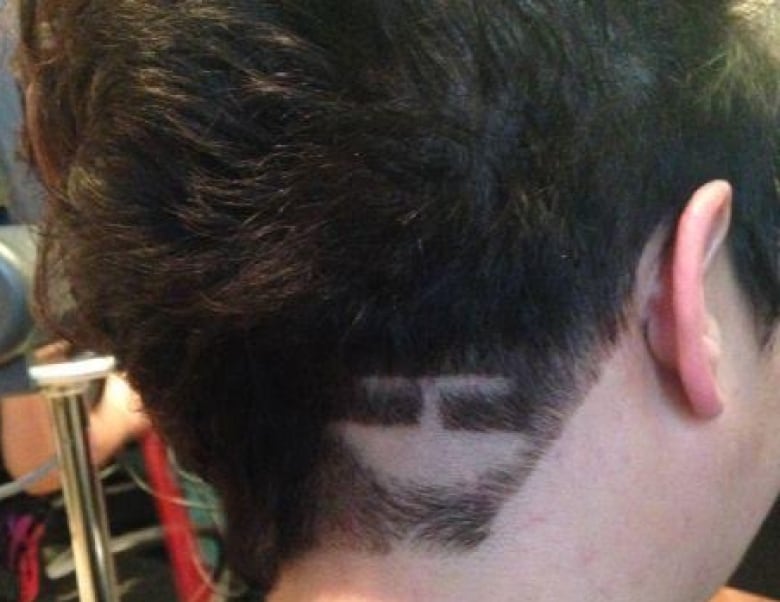Aboriginal hairstyles express culture, pride and identity
'I can do whatever I want to my hair but I also feel like ... I pull my strength from it'

Charlotte Overvold started shaving her head a few years ago when she got alopecia, a skin disease that causes hair to fall out.
"I was living in Vancouver. I was away from my family. I was very sad, really stressed," says Overvold, a Dene artist from the Northwest Territories.
She says getting alopecia devastated her.
"I really, really loved my hair and I felt like I was robbed of something that meant a lot to me."
For Overvold and many other aboriginal people, hair is a connection to ancestry and spirituality. Since the beginning of time, hair has been used by cultures to express identity, religion and individuality.
But it has also been used as a symbol of oppression, assimilation and even resistance. Students attending Indian residential schools in Canada had their hair cut short, but when members of the Indian Brotherhood started calling for First Nations' rights in the 1960s, they grew their hair long.
'I pull strength from it'
Following the advice of her father, Overvold eventually returned to the North and began to feel whole again. Two weeks after she returned, her hair grew back.
Now in Yellowknife, her hair flows long past her shoulders — but it won't for long. Overvold slowly moves her clippers along the side of her head and begins to shave one side of her head.
Some people in the North and across the country are getting creative with their hair and using it as a symbol of pride to express who they are.
"I can do whatever I want to my hair," says Overvold, "but I also feel like I have power with it too, like I pull my strength from it."
Like Overvold, Linzie McIvor has shaved half her head. The Cree hairstylist lives in Vancouver but grew up in Yellowknife.

McIvor talks about the Mohawk as an early example of an aboriginal-inspired hairstyle. She thinks First Nations culture is becoming more prevalent in society.
"You want to raise your head high to be proud of being aboriginal. So I feel like people are expressing their culture a lot more."
She says the thick, straight hair of aboriginal people makes it easy to add shading and shave designs into.
'I like your ulu'
Alexia Cousins in Iqaluit has a traditional Inuit knife, called an ulu, shaved into the back of her hair. The idea came at the suggestion of a friend, and Cousins didn't hesitate.

"My hair's always changing. I get pretty bored of it quickly so you know I've been known to change my hair every three to four weeks."
Cousins, who previously had her hair dyed the colours of northern lights, says she's getting lots of compliments on her new style.
A lot of people were just walking up to me and saying 'Hey, I like your haircut,' 'Hey, I like your ulu.''
A feather for bravery
Women aren't the only ones getting their hair styled in a specific way to express their culture. Five-year old Zander Lennie of Tulita, N.W.T., has a feather design shaved into his hair.
His mother Lynda Lennie says Zander loves everything about his culture, from wearing a vest to playing the drum to getting his hair styled a certain way.
"I thought it would be nice and, as he thinks the feather comes as an award for bravery, I knew he would like it," she says about his hair design.
Lennie says she has seen another unique hairstyle in her community of about 500 people.
"I seen a lady here who used to have two braids in her hair and then have a thin strip of moose hide intertwined between them like the olden days. It looked very beautiful and very elegant. It was awesome to see that she was proud to wear her hairstyle like that."
